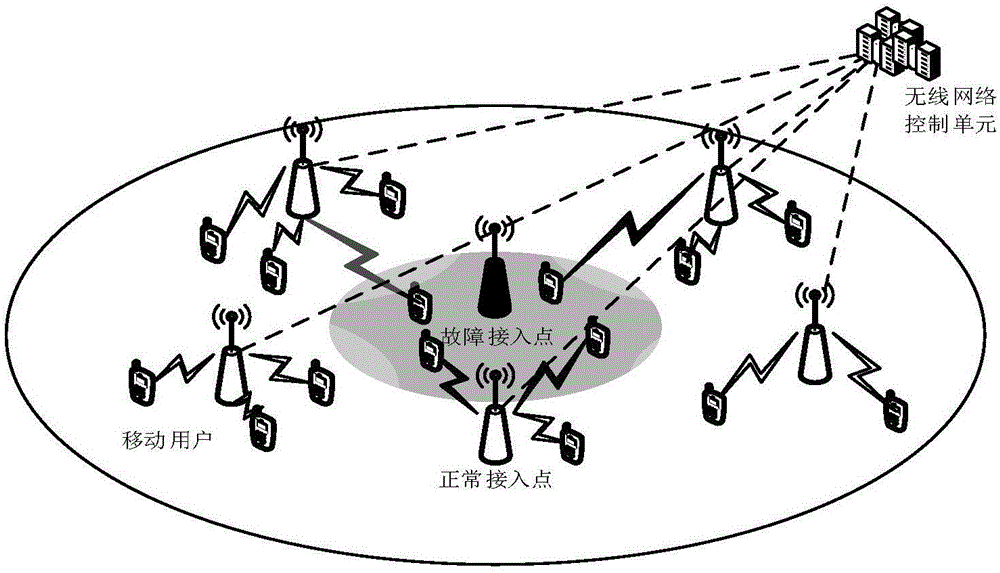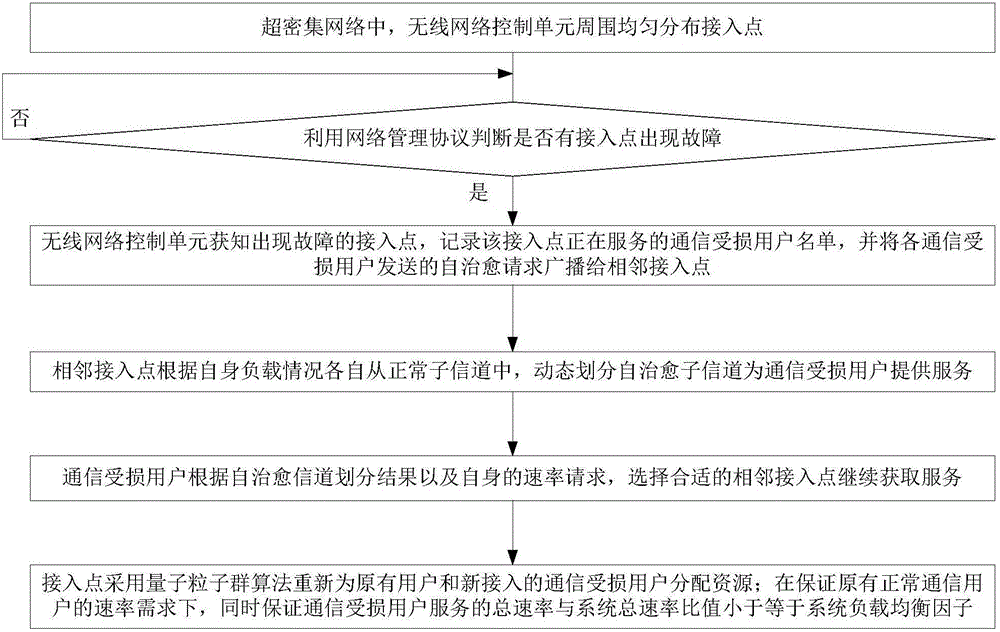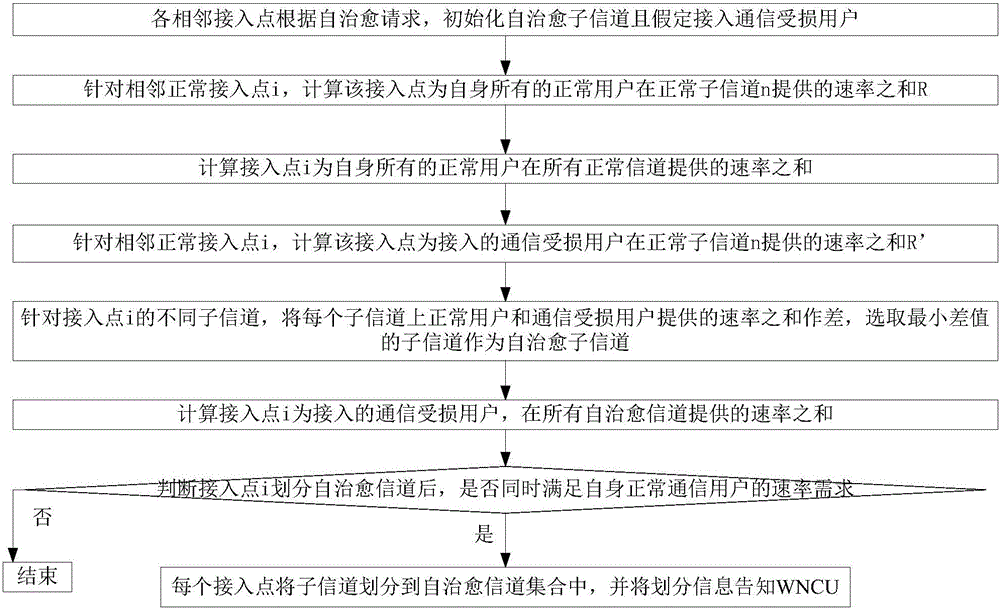Access point selection and resource distribution combined self-healing method in ultra-dense network
An ultra-dense network, joint access technology, applied in the self-healing field of joint access point selection and resource allocation, and can solve problems such as optimization without considering energy efficiency, complex network topology, and optimization without considering access point selection. , to ensure reliable services and improve resource utilization.
- Summary
- Abstract
- Description
- Claims
- Application Information
AI Technical Summary
Problems solved by technology
Method used
Image
Examples
Embodiment
[0152] Embodiment: The scenario of this embodiment is as follows: 10 access points are evenly distributed and their positions are fixed. Each access point has a coverage range of 10m, and some access points fail to provide services due to hardware and software failures. There are 20 users in the system, 72 orthogonal sub-channels are frequency-division multiplexed, and the channel model adopts the Rayleigh fading model. In addition, the transmit power of each access point is 30dBm, the circuit loss power is 24dBm, the thermal noise power is -174dBm, the system bandwidth is 10MHz, and the carrier frequency is 2.3GHz.
[0153] In order to prove the performance of the self-healing mechanism proposed by the present invention, two existing self-healing mechanisms were selected for comparison.
[0154] Mechanism 1 (EPA-FHC): When the communication-impaired user chooses an access point again, he only chooses according to the signal strength. In addition, the resource allocation adopt...
PUM
 Login to View More
Login to View More Abstract
Description
Claims
Application Information
 Login to View More
Login to View More - R&D
- Intellectual Property
- Life Sciences
- Materials
- Tech Scout
- Unparalleled Data Quality
- Higher Quality Content
- 60% Fewer Hallucinations
Browse by: Latest US Patents, China's latest patents, Technical Efficacy Thesaurus, Application Domain, Technology Topic, Popular Technical Reports.
© 2025 PatSnap. All rights reserved.Legal|Privacy policy|Modern Slavery Act Transparency Statement|Sitemap|About US| Contact US: help@patsnap.com



